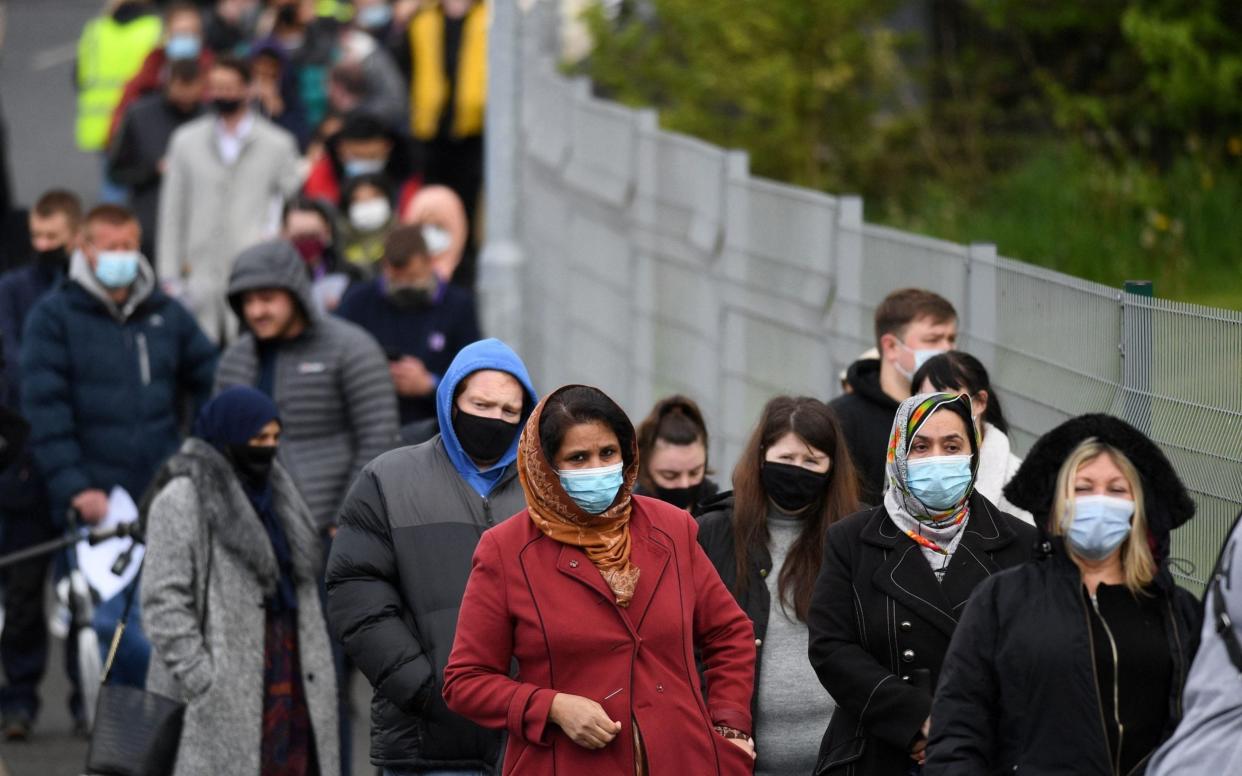Every time we think life might be returning to normal, along comes another Covid variant

These variants are handy, aren't they? Each time the Government needs to scare the public into submission, a new mutation pops up and chastens anyone considering reclaiming their pre-lockdown life.
Last week, Boris Johnson warned that the Indian variant could mean some "hard choices" which might see the full release of lockdown pushed back beyond June 21.
Undoubtedly, cases of this latest mutated virus are on the rise. It is now the dominant strain in some areas. Yet there is currently no evidence to suggest any of the variants will evade the vaccine programme, or that a new rise in cases will lead to an increase in hospital admissions or deaths.
This pattern has now been playing out for several months, and curiously emerged just as the public was starting to seriously question apocalyptic modelling predictions stating that deaths would rise to 4,000 a day.
It began in mid-December, when Matt Hancock, the Health Secretary, told the Commons that more than 1,000 cases of the Kent variant had been found in 60 local authorities, largely in the south of England.
It coincided with a spike in cases, with the variant quickly taking over from the Chinese wild-type which caused the first wave, leading Mr Johnson to cancel Christmas for many. By January, there was a countrywide lockdown.
On Jan 4, the Prime Minister addressed the nation, warning that the variant was between 50 and 70 per cent more transmissible.
A few weeks later, on Jan 22, Sir Patrick Vallance, the government's chief scientific adviser, said the Kent variant could be up to 30 per cent more deadly and suggested it may kill 13 or 14 of every 1,000 men over the age of 60 who caught it, compared to 10 in 1,000 of the old variant.
Dire warnings from Public Health England around that time suggested the variant had caused us to soar past the peak of the first wave. Yet the second wave always seemed worse because it occurred during the winter, when many people would ordinarily be expected to die.
In fact, despite this terrifying new deadly variant, second wave levels never reached the excess deaths of the first wave. It later emerged the Kent variant was no more deadly, and that the vaccines worked very well against it. King's College estimated it was probably about 35 per cent more infectious – far lower than the public was originally told.
Cases peaked in Britain on Jan 4, a day before lockdown was imposed. But as the vaccine programme picked up pace and infections, admissions and deaths started to fall substantially, suddenly the public was informed about a new variant threat.
On Jan 25, Mr Hancock announced that dozens of cases of the South African variant had been found on British soil, and the strain was now classed as a variant of concern.
In the weeks running up to the Government announcing its roadmap out of lockdown on Feb 22, press conferences were heavily dominated by concerns over variants and people were told that staying at home and following social distancing was the best way to tackle their emergence.
When the roadmap was announced, the Government added variants into its test of whether restrictions could be lifted, saying the release could only go ahead if "our assessment of the risks is not fundamentally changed by new variants of concern".
Being spooked by a variant was now grounds to withhold freedom.
The week before schools and care homes were due back on March 9, Mr Hancock announced a third worrying variant, this time from Manaus in Brazil, which was thought to reinfect those who had already had Covid.
So it was with a familiar sense of deja vu that the announcement of the latest release of restrictions on May 17 was accompanied by foreboding about the Indian variant. Again, we had warnings that it could be far more transmissible than even the Kent strain.
It is now clear that neither the South African nor Brazilian variants ever achieved a large foothold in Britain, being consistently out-competed by the less deadly Kent strain.
And there is currently no evidence to suggest the Indian variant is more lethal. In fact, Prof Sharon Peacock, of the University of Cambridge and Cog-UK which is monitoring variants for the Government, believes the current variant is outcompeting two other more dangerous versions from India.
The vaccines have so far stood up to every variant thrown at them. The death rate for the Indian variant is far below the Kent variant, hospital admissions are not rising and the NHS is in no danger of being overwhelmed. This is despite one of the coldest springs for decades, which has forced people indoors.
Cases largely appear to be rising in areas of vaccine hesitancy, suggesting people who are avoiding the jab are placing themselves and their communities at risk. This weekend, Mr Hancock suggested the majority of people in hospital with the variant had refused the vaccine.
Can the rest of the county really be expected to forgo freedom because others have decided to not take the protection offered?
More recently, there has clearly been a tension in the Government between the optimistic tone of the Health Secretary, who is confident that his vaccine rollout can save the day, and the Prime Minister and scientists, who seem oddly fatalistic that the jabs may fail.
If they do, we are out of options. Variant booster jabs will not be ready for many months, and the country cannot stay in lockdown indefinitely.
We will only be able to test out hard-won vaccine resilience by unlocking. Nearly 70 per cent of the adult population of Britain has had at least one vaccine dose, meaning we are now safer than at any time through the pandemic.
We should not still be cowering behind restrictions and the threat of variants.
